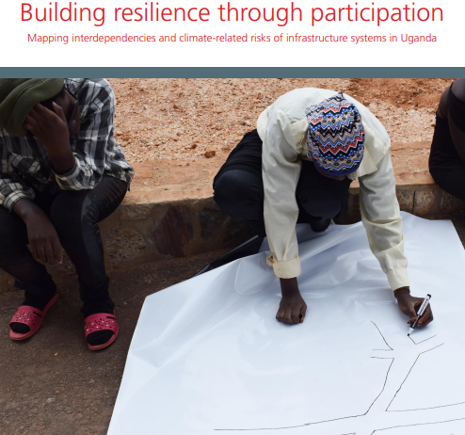As the effects of the climate emergency worsen and become more widespread, negative impacts on infrastructure will increase. While this will affect the majority of communities around the world, it is the poor and most vulnerable ones, typically in the global south, that will suffer the most. Providing the means for communities to identify climate and infrastructure risks is essential to build resilience and foster accountability.
However building effective resilience requires an approach that provides tangible steps but also facilities a culture of community dialogue and public participation. To deal with these challenges, Engineers Against Poverty, Makerere University Business School and digital company thinkIT developed, with funding from the Research & Development Enabling Fund of the Institution of Civil Engineers, a new framework to support communities identify climate and connected infrastructure risks. As infrastructure assets are not just linked, but interdependent on each other, infrastructure risks need to unpack the wider complex system of infrastructure and understand how assets intersect and how climate disaster may cascade from/to connected systems.
Combining community mapping activities and guided questions, our framework provides valuable support to communities in understanding the propagation path of a climate disaster as well as untangling economic and social consequences arising from climate impacts, such as loss of property value and the increase in domestic violence and health risks.
The methodology was tested in the Ugandan communities of Awoja and Gerenge with promising results and the potential of the method to fill a relevant gap in bottom-up approaches to tackle infrastructure risks and interdependencies in the event of climate shocks.
Ensuring effective resilience building for the poor and most vulnerable is key to minimise the unfair impacts of the climate crisis. We also cannot neglect that community ownership and participation is an important ingredient for a real bottom-up resilience approach. Our six-step tool can aid communities to identify potential hazards, understanding their surroundings and the intersection of climate and infrastructure risks. By doing so, local knowledge can be captured, strengthening accountability and breaking climate inaction and alienation.
We launched and discussed our research and new report on Building resilience through participation at our 25th anniversary celebration in November 2023.
As the next step, we are seeking support to develop a second pilot to compare results and test the method in a different context to solidify our approach.
Read our report, Building resilience through participation – Mapping interdependencies and climate-related risks of infrastructure systems in Uganda.
